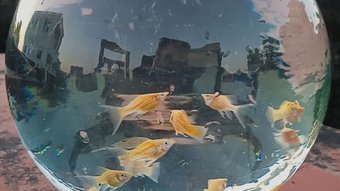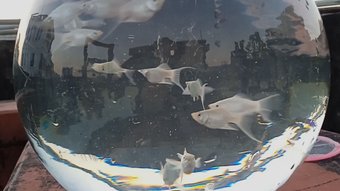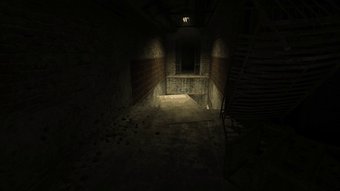DIY Aquarium Plans & Step-by-Step Instructions
2
About :
Building a fresh or saltwater do-it-yourself (DIY) aquarium can be fun as well as challenging. Use this materials list, pre-assembly instructions, and complete step-by-step instructions to construct a 55-gallon glass aquarium with 1/4 inch glass. This aquarium is constructed with the two end pieces of glass fit inside of the back and front panes, and the front, back, and two side panels set on top of the bottom base pane of glass.
Working With Glass
The aquarium built using these instructions measures 14 inches high, 4 feet wide, and 14 inches deep, but can also be customized for smaller sizes as well. If you plan to build a taller or larger-sized tank, refer to the aquarium glass thickness calculator to ensure your glass will have the right safety factor.
Use these tips for working with glass:
Plan ahead before cutting the glass by drawing a good schematic. If you do not feel comfortable with cutting glass, have a professional glazier cut and prepare the pieces for you.
Use precise measurements to ensure a proper fit and help avoid leaks.
Undoubtedly you will be putting a lighted hood on your tank, so design it accordingly. Do not put a solid glass cover on top of an aquarium, as this restricts the oxygen-carbon dioxide gas exchange efficiency, resulting in poor or inadequate aeration of the aquarium.
Materials List
Aside from one bottom, one front, one back, and two end pieces of glass, you will need the following items to construct your aquarium.
Single-edged razor blades
Acetone
Non-toxic 100 percent silicone sealant. All-Glass Brand 100 Percent Silicone Sealant or a similar type product is recommended.
Roll of paper towels
Washable felt tip marker
Roll of duct tape
Emery cloth or silicon carbide sandpaper
For a larger aquarium above 30 gallons in size, it is recommended that you install at least one "support brace" at the center of the tank. This can be done by cutting a six-inch-wide piece of glass measured to fit the "outside" edges of the front and back panels, then attaching it into place with silicone. For extra strength you can pancake and glue two brace pieces together using silicone, or particularly for longer tanks, install two separate brace pieces of glass equal distances from each end of the tank.
01
of 06
Getting Ready to Assemble
Before starting the assembly of the aquarium you need to first get items ready for use and learn about the following important points of construction.
Prepare the Cut Glass Panes
Once the pieces of glass are cut, using the emery cloth or silicon carbide sandpaper, buff all the raw edges of the glass just enough to take off the sharpness.
Clean all the glass pane joint areas and edges about 1/2 inch inward (any place where the silicone will be applied) with acetone on a paper towel.
Prepare the Duct Tape
Cut 16 strips of duct tape, about 5 inches long. Stick them to anything close by within easy reach that has a clean surface to it, and that the tape won't stick too much to, with at least half of the tape hanging down freely. If during assembly you run out of pieces of tape, before installing another panel, cut some more pieces.
Tip: If at any time during construction you have trouble with the tape not sticking to the glass, just clean the area with some acetone on a paper towel and try again.
https://www.thesprucepets.com/thmb/RCKblqJmIS7DoblR2TwM3vB9Iqo=/700x0/filters:no_upscale():max_bytes(150000):strip_icc():format(webp)/diyaqdiagram1-56a81c245f9b58b7d0f0b7fa.gif
After all your glass pieces are cut and prepared, lay or arrange the pieces out so you know which piece is going where. Once the placement of the panes has been determined, to help keep track of where each piece goes (which edge or side of the glass pane is going to go up or down, inside or outside, etc.), mark them with words or directional arrows using a washable felt tip marker.
Take the bottom base piece of glass, place it on a flat, non-abrasive surface, then firmly press and stick eight pieces of the duct tape (two pieces on each side) to the glass from the bottom side with the sticky sides up (see diagram view 1). Tip: This is easily done by lifting up the glass from each side just enough to stick the tape pieces in place.
03
of 06
Install the Front Glass Pane
Begin by installing the front glass pane. This step is much easier to do with an assistant to hold the front glass pane upright and in place while you complete the installation of the first side piece in the next step. Refer to diagram view 2 for installing the front glass pane.
You will use the same glass installation technique with each pane:
Apply a thin but adequate solid line of silicone to each inside edge of all areas to be joined, then, at a slight forward angle, align and insert the piece of glass onto the bottom glass pane, and slowly tilting it upright, press it lightly, but firmly down into the silicone, fitting it solidly into position.
Do not wipe off any excess silicone that might squeeze to the outside edges of the glass. This can be cleaned up or trimmed later on, once the silicone has fully cured.
Once the front glass is in place, fold the two bottom pieces of duct tape upward and stick them to the front of the glass.
Install a Side Glass Pane
Using the same installation method with the silicone, install the first side panel (see diagram view 3).
Fold the two bottom pieces of duct tape upward and stick them to the front of the glass, and secure the side piece to the front piece of glass by wrapping 2 additional strips of duct tape around the corner from one side to the other (see diagram right end view example).
Install the Side and Back Panels
Following the same procedure as above, install the other side piece, and finally the back panel.
With all the pieces in place and the tank constructed, run a thin but adequate solid line of silicone into the eight joint areas on the inside of the tank, then run your thumb over the silicone from one end to the other of each seam, preferably in one continuous motion, to smooth the silicone down and force it into the joint areas. (Install the "brace(s)" here, if adding one).
of 06
Curing and Completing the Tank Construction
Allow the silicone to cure for 24 hours.
Refill the tank with fresh water and allow it to sit for at least 12 hours, 24 is better. This gives you a good test period, and you will feel much more confident of success when you finally fill the tank with salt water, put it all back together, and add your inhabitants.
Tags :
Their limit for today is $0!
More Videos
@viking-ventures: 0.0198
@juecoree: 0.0104
@stuntman.mike: 0.0051
@stemgeeks: 0.0051
@babytarazkp: 0.0024
@tokenyzzy: 0.0013
@slider2990: 0.0012
@stemline: 0.0011



























Comments:
Reply:
To comment on this video please connect a HIVE account to your profile: Connect HIVE Account